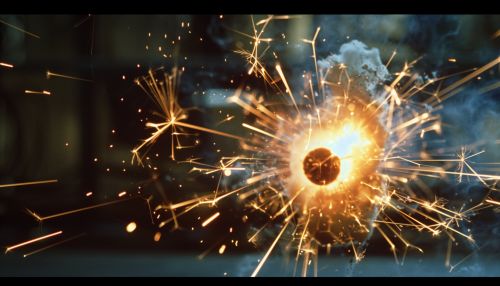Non-stop decay
Introduction
Non-stop decay is a term used in various scientific disciplines to describe continuous processes of degradation, breakdown, or transformation without any interruption. This concept is prevalent in fields such as physics, chemistry, biology, and even in certain areas of engineering and material science. Understanding non-stop decay is essential for comprehending the long-term stability and behavior of systems, materials, and biological entities.
Physical Non-Stop Decay
Radioactive Decay
One of the most well-known examples of non-stop decay in physics is radioactive decay. This process involves the transformation of an unstable atomic nucleus into a more stable one, accompanied by the emission of particles and energy. The rate of radioactive decay is characterized by the half-life, the time required for half of the radioactive atoms in a sample to decay. This process is continuous and follows an exponential decay law.


Thermodynamic Entropy
In thermodynamics, non-stop decay can be associated with the concept of entropy, which is a measure of disorder or randomness in a system. According to the second law of thermodynamics, the entropy of an isolated system always increases over time, leading to the eventual state of maximum entropy, or thermodynamic equilibrium. This increase in entropy represents a continuous and irreversible process of energy dispersion and degradation.
Chemical Non-Stop Decay
Corrosion
Corrosion is a chemical process that exemplifies non-stop decay in materials. It involves the gradual destruction of metals through chemical reactions with their environment, such as oxidation. For instance, the rusting of iron is a form of corrosion where iron reacts with oxygen and moisture to form iron oxide. This process is continuous and can lead to significant material degradation over time.
Polymer Degradation
Polymers, including plastics, undergo non-stop decay through various mechanisms such as photodegradation, thermal degradation, and chemical degradation. Exposure to UV light, heat, and reactive chemicals can break down the polymer chains, leading to a loss of mechanical properties and eventual disintegration. This continuous degradation process is a significant concern for the longevity and environmental impact of polymer-based materials.
Biological Non-Stop Decay
Cellular Senescence
In biology, non-stop decay can be observed in the process of cellular senescence, where cells lose their ability to divide and function over time. This process is driven by the accumulation of cellular damage, oxidative stress, and the shortening of telomeres. Senescent cells contribute to aging and age-related diseases, representing a continuous decline in cellular health and function.
Decomposition
Decomposition is another biological process that exemplifies non-stop decay. It involves the breakdown of organic matter by microorganisms, such as bacteria and fungi, into simpler substances. This process is essential for nutrient cycling in ecosystems and occurs continuously until the organic material is fully decomposed. Decomposition rates can vary depending on environmental conditions and the nature of the organic material.
Engineering and Material Science
Fatigue and Wear
In engineering, non-stop decay is often observed in the form of fatigue and wear of materials. Fatigue refers to the progressive and localized structural damage that occurs when a material is subjected to cyclic loading. Over time, this can lead to the initiation and growth of cracks, ultimately resulting in failure. Wear, on the other hand, involves the gradual removal of material from surfaces in contact due to mechanical action. Both fatigue and wear are continuous processes that degrade material performance and lifespan.
Creep
Creep is another phenomenon in material science that represents non-stop decay. It is the slow, time-dependent deformation of materials under constant stress, typically at high temperatures. Creep can lead to permanent deformation and eventual failure of components, especially in high-temperature applications such as turbines and reactors. Understanding creep behavior is crucial for predicting the long-term performance of materials under stress.
